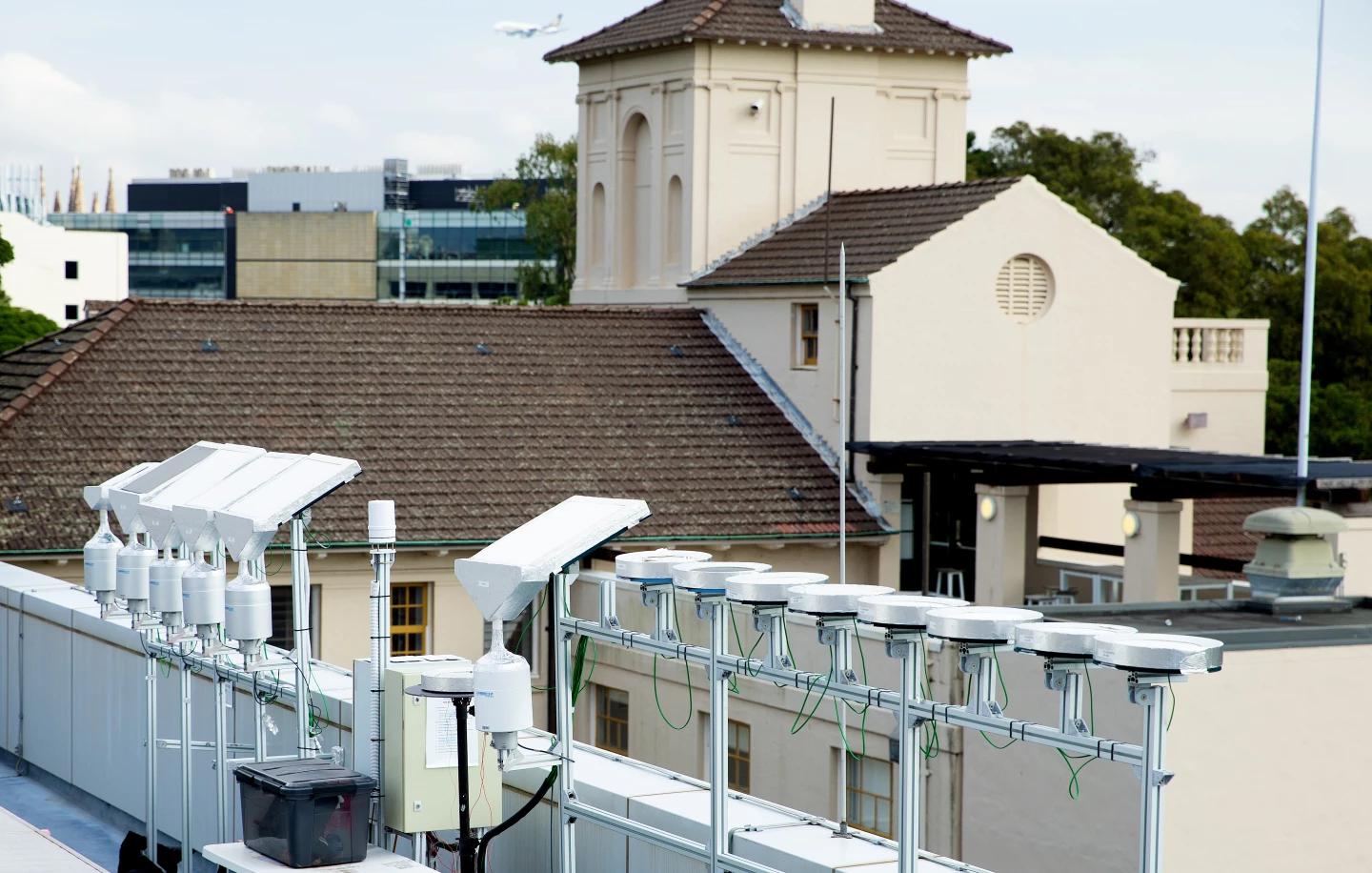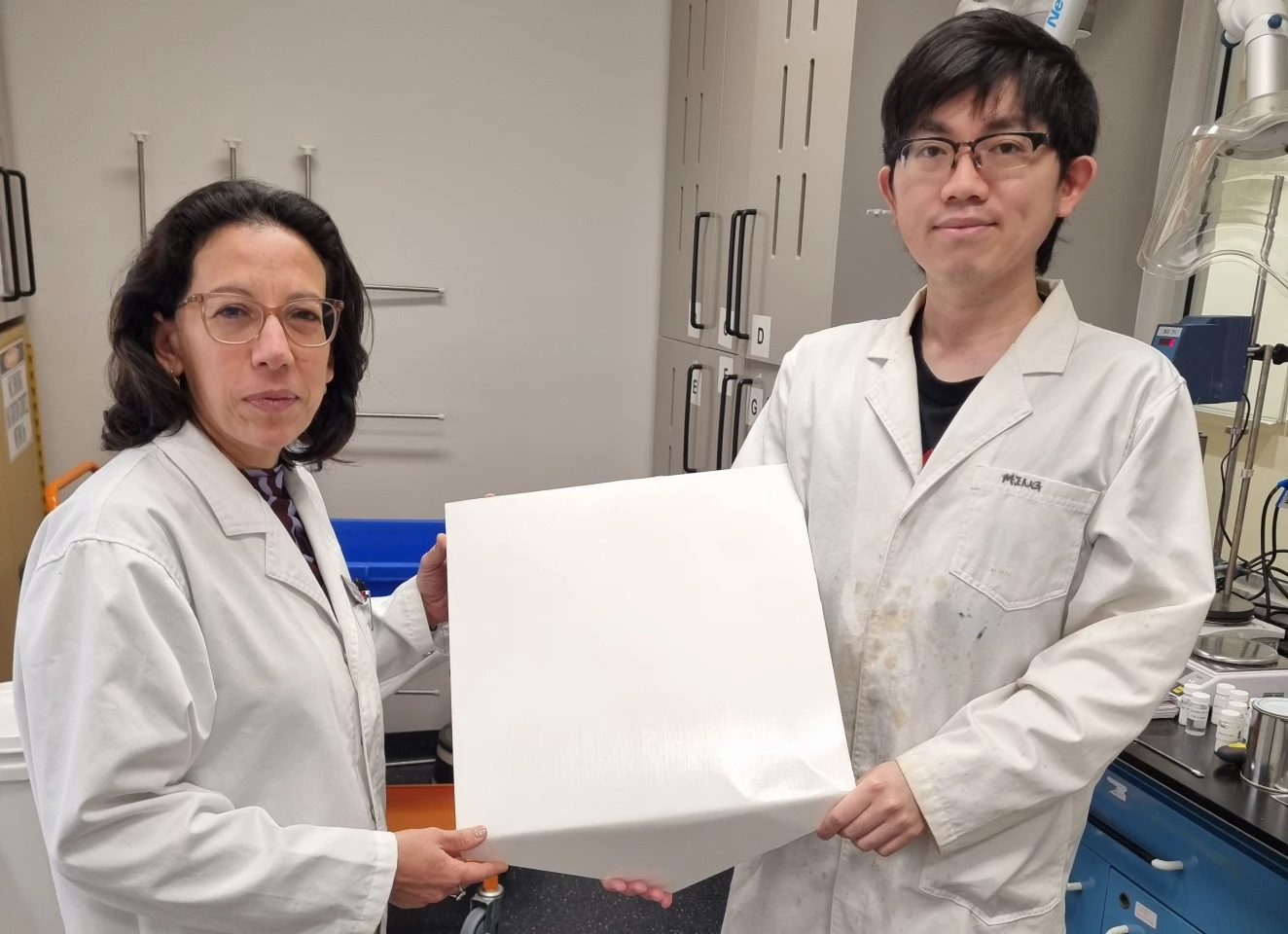A roof paint that can cool your home and pull fresh water straight out of the air? It's within reach, as scientists scale up production of a new kind of paint-like coating that shields roofing from the sun's rays and harvests dew from its surface.
Researchers at the University of Sydney and commercial start-up Dewpoint Innovations have created a nano-engineered polymer coating that not only reflects up to 97% of the sun's rays, but also passively collects water. In tests, it was able to keep indoors up to 6 °C (~11 °F) cooler than the air outside.
That temperature differential results in water vapor condensing on the surface – like the fogging on a cold mirror – producing a steady trickle of droplets.
In trials on the roof of the Sydney Nanoscience Hub, the coating captured dew more than 30% of the year, generating as much as 390 mL of water per square meter (roughly 13 fluid ounces per 10.8 square feet) daily. This might not sound like a lot, but a 12-sq-m (about 129-sq-ft) section of treated roof could produce around 4.7 L (around 1.25 US gallons) of water per day under optimal conditions.
Most houses have a lot more roof than that. "Over an average residential roof," reads the Dewpoint website, "you can expect enough water per day to cover your basic water needs." That's in addition, mind you, to the rainwater you'd be collecting as well, since you do need to have a typical rainwater collection system installed to capture the dew. In Sydney for example, assuming an average annual rainfall around 1 m (3.3 ft), The Tank Factory tells us we could expect to collect somewhere around 6 times more rainwater than condensation - but that equation would certainly look very different in drier areas.
“This technology not only advances the science of cool roof coatings but also opens the door to sustainable, low-cost and decentralized sources of fresh water – a critical need in the face of climate change and growing water scarcity,” said research lead Chiara Neto, a professor at the University of Sydney's Nano Institute and School of Chemistry.
The team has recently finished up a six-month outdoor trial, with panels featuring the polymer paint-like coating set up on the roof of the Sydney Nanoscience Hub building. During this period, minute-by-minute data was collected on the coating's cooling and water collection abilities, and found that dew could be collected over 32% of the year, suggesting water could be harvested from the air during periods without rain. What's more, the coating withstood the challenging test of the harsh Australian sun, and showed no signs of degradation over the six months.

Most commercial white paints – especially those designed for exterior walls and roofs – use titanium dioxide as the primary pigment, which reflects UV light. However, while this novel coating may look like white paint on the surface, it gets its sun-shielding power through structure. The porous coating is made of polyvinylidene fluoride-co-hexafluoropropene (PVDF-HFP), so reflects the sun through microscopic pores. Those tiny air pockets scatter sunlight in all directions without glare and without the need of UV-absorbing chemicals that can degrade over time. The result is a self-cooling, weather-resistant film that was able to sustain its high performance throughout the lengthy testing phase.
“Our design achieves high reflectivity through its internal porous structure, delivering durability without the environmental drawbacks of pigment-based coatings,” said study lead author Dr Ming Chiu, Chief Technology Officer of Dewpoint Innovations. “By removing UV-absorbing materials, we overcome the traditional limit in solar reflectivity while avoiding glare through diffuse reflection. This balance between performance and visual comfort makes it easier to integrate and is more appealing for real-world applications.”
The water droplets form on the surface of the coating and, thanks to its smooth topcoat, roll off to a collection point. The team believes that large collection areas could provide water for horticulture, misting systems for cooling or even use in hydrogen production.
“While humid conditions are ideal, dew can form even in arid and semi-arid regions where night-time humidity rises," said Neto. "It’s not about replacing rainfall but supplementing it – providing water where and when other sources become limited.”

And unlike many materials that stay stuck in the purgatory of development stage, this innovation is already being scaled. Dewpoint Innovations is currently developing a water-based paint formulation that can be applied with common rollers or sprayers.
“At Dewpoint, we’re proud to partner with the University of Sydney to bring this breakthrough in passive atmospheric water harvesting to life through advanced paint-based coatings,” said Perzaan Mehta, CEO of Dewpoint Innovations. “It’s a scalable, energy-free solution that transforms rooftops and remote infrastructure into reliable sources of clean water, helping address an urgent challenge of our time.”
While still in its early stages, the team is confident it'll see a commercial release before long.
“Imagine roofs that not only stay cooler but also make their own fresh water – that’s the promise of this technology,” Neto added.
The research was published in the journal Advanced Functional Materials.
Source: University of Sydney via Scimex







